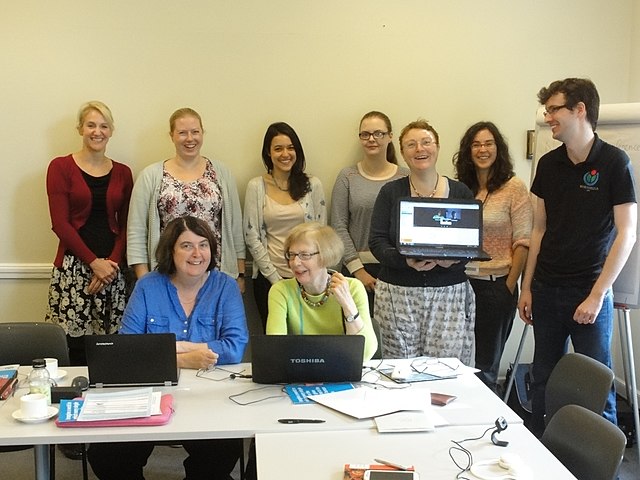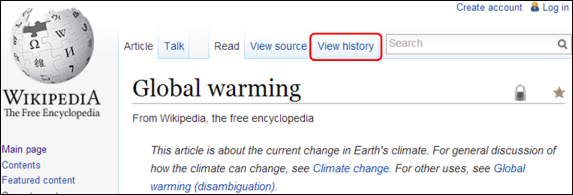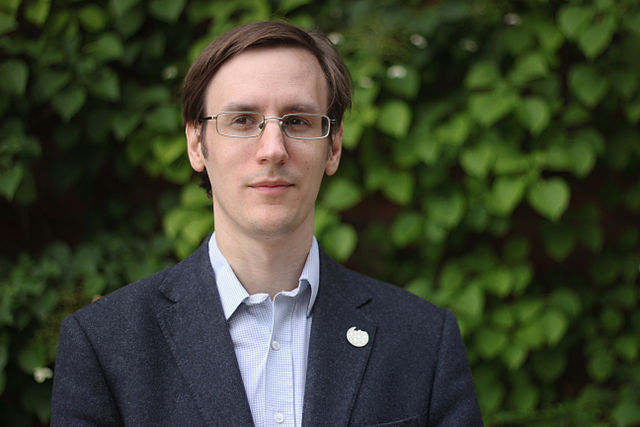This post was written by Joe Sutherland
Established in 1660, the Royal Society is dedicated to preserving and promoting science expertise. From its base in central London, it serves as the United Kingdom’s academy for the sciences, boasting a wide portfolio of fellows from every walk of scientific life.
Though rooted in tradition, they are very keen to spread their prowess into the digital realm. John Byrne, a Wikipedian since late 2006, jumped at the opportunity to join them as a part-time Wikipedian in Residence for six months in 2014.
“The Royal Society sees itself as having the lead in the presentation of science to the general public,” John explains, “and that’s a big concern, so it’s very interested in the popularisation of science. They hold lectures, they have book prizes for popular books about science.
“It sees Wikipedia in that context. Wikipedia fits very well into that,” he adds.
During his time with the Royal Society, John helped to organise a number of events for the public and academia alike.
“The project involved several public events, mostly training workshops, where we had a lot of helpers from the existing community, and that was great. It was harder to involve the wider scientific editing community, but we did manage that in some cases.
“There were various aspects: there were editing workshops, there was work getting images released, and we got public subscriptions to the Royal Society’s journals for a number of Wikipedians.”
Even before John started working with the Royal Society, he was already getting involved with events. He played a key role in Ada Lovelace Day 2012 before he arrived as Wikipedian in Residence, as well as organising events for International Women’s Day during his tenure there. Both were dedicated to improving the site’s coverage of women in science.
“They were both very successful training editathons,” John says, “concentrating on the biographies of women scientists which is a real issue in the scientific sector. Both of those were tremendously successful with a really great crew.

Photo: User:Rock drum, CC-BY-SA 4.0
“It’s actually harder to do on other subjects,” he continues, “but women in science is a topic that’s very easy to recruit for, and you get excellent results.”
“We were very lucky that both the women’s events were addressed by female fellows of the Royal Society, who came in especially which was tremendous. Ada Frith actually trained in the Ada Lovelace Day and produced two articles which is great. They were really good days, both of them.”
That the Royal Society has such influence in the field is a fact not lost on John, who is keen to develop a strong working relationship with the organisation. He feels Wikipedia’s information can be enhanced with the Society’s involvement.
“The Royal Society is the most prestigious organisation in the scientific sector, and it gives Wikipedia credibility, and other organisations in the sector have looked at that partnership.”
Since they were already quite interested in getting involved with digital output and the spreading of their knowledge, John found no resistance while working with them. “The Royal Society is really keen to continue collaborating with Wikipedia, which is great, because not all Wikipedian in Residence projects have had that result,” he says.
“They’d already been working with Wikipedia for about two years before I became involved, and they’re very keen to go on. We’ve learned a lot of lessons about what to do and what not to do, and I’m confident that the programme will keep going at some level.”
John feels that continuing a partnership would bring benefits to both sides of the equation. “There’s a lot of benefit both ways for the Royal Society and Wikipedia working together. We get improved content, and they get improved coverage of science generally, which is a large part of what they’re about,” he explains.
“With other scientific institutions, there’s a mutual benefit in improving Wikipedia content, and improving coverage especially addressed to the wider public of their area of science.”
- For more on The GLAM-Wiki Revolution, visit the project page, or find out more about the Royal Society Wikimedian in Residence project.



















